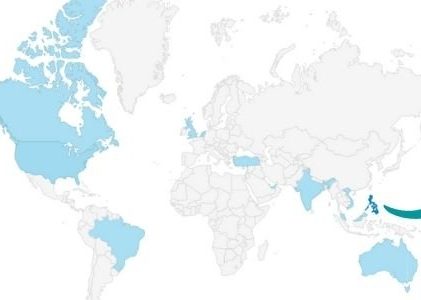Diversify in overlooked ways. This post is about risk mitigation for the lay investor beyond diversification through various stocks, bonds, real estate, and other investments — but without diving into more complex instruments like derivatives and options. These are 5 unspoken ways to diversify and lower your financial exposure.
If you’re here, you probably already know how buying different stocks is a form of diversification. Or how buying bonds, when you’re heavily invested in stocks, is another form of diversification (through asset allocation). But beyond those mentioned, there are untold but equally valid ways to reduce risks.
For example, a doctor investing in stocks outside of the medical profession is a risk-mitigating move. Let’s talk about some examples to stir your perception of what diversification is and can be.
Page Contents
What this is not about
Choosing to diversify is tantamount to choosing lower risk and lower potential returns. This article isn’t about making a better decision. Because what is “better” anyway when we all have different priorities, goals, and risk-tolerances, right?
You can definitely choose to go all-in and not diversify — the potential returns are higher. It’s a matter of preference.
For investors who wish to lower their risks, this talks about some of the ways you could.
(Read this post if you’d like to understand the risk-return tradeoff a bit more: The Risk and Return Trade-off Applied in Real Life (Uncommon Examples))
Traditional ways to diversify and lower portfolio risk
I won’t go into great detail here but just so we’re clear, here are some of the traditional ways to diversify a portfolio.
- Looking for investments with low correlations (e.g., buying companies from industries that don’t move together)
- Diversification in asset classes (e.g., looking to invest in real estate when you have a lot of tech stocks)
- Multiple streams of income (e.g., a business that relies on more than one product)
So in general, the traditional methods of diversification mean buying different asset classes (stocks, bonds, real estate), buying different options within an asset class (Stock A and Stock B), and having multiple sources of income. For more information, here are Investopedia’s 5 tips for diversifying your portfolio in the traditional sense.
(Not all risks are rewarded. Some risks are just unnecessary, and those aren’t compensated. To learn more, see Reduce Risk in the Stock Market: Diversification Primer)

4 Ways to lower your risks that no one talks about
This isn’t a complete list, of course. These are just some of the means I’ve recognized over the last decade or so of observation. (This is surely not just a curated list from other websites. In fact, I haven’t seen anyone talk about this — at least not as directly and explicitly as this. That’s just sad.)
And I hope you come to the realization, just as I have, that complete diversification in financial exposure considers the entirety. It goes beyond diversified stock selection and proper asset allocation.
I’ve talked enough. Here’s the list!
Buy investments that aren’t related to your profession
A doctor buying stocks outside of the medical industry.
The medical profession is relatively stable but a doctor investing everything in hospital REITs, hospital stocks, etc. is really putting everything in one basket.
You could say that it’s a prudent decision because that’s the business the doctor understands. But again, this isn’t about being right nor wrong. It’s about diversification. A doctor’s primary source of income will be tied to the medical industry.
In general, this can be any professional (or business) investing in assets unrelated to their primary industry. For example, an internet marketer can diversify her financial exposure by buying stocks with a low correlation to Google. (Because online ads are dominated by Google.)
Investing in another industry relative to your profession is a form of diversification that’s often not considered in the investing community.
Invest in companies you don’t work for
The bank manager of Bank A buying stocks in Bank B.
This one’s similar to the previous example — but in a less effective way of diversification. In other words, it’s closer to “high-risk” on the low-to-high risk spectrum. But it’s a way to diversify nonetheless.
Banks A and B will probably move in similar directions by being in the same industry. But as competitors, one’s likely going to do better than the other. This is where the diversification benefits come in. If a bank manager’s salary and performance bonuses are tied to Bank A, then investing in Bank B is a risk-mitigating move.
(I can’t emphasize enough that this isn’t about being right nor wrong. If Bank A does better, and the bank manager of Bank A invests in everything in her bank, then she reaps the higher rewards.)
If you want to lower your financial exposure but are extremely bullish on the prospects of your industry, then consider this form of diversification.
Select investments that counter the nature of your work
A salesperson, paid mostly in commissions, getting more fixed-income assets like bonds or REITs.
Introducing risky assets to your portfolio is a good way to increase exposure and potential returns. But if you’re in sales or a profession with high volatility in income, be careful not to over-allocate in risky assets. Without considering the nature of your work, there’s a chance you’re allotting too much in volatile assets.
Fixed-income assets stabilize your income. A sales job is probably going to do worse during periods of low inflation, but having interest-bearing assets or rental properties provide some relief.
Buy in economies that balance your portfolio
Filipinos increasing the weight of ETFs tracking the indices of developed countries.
I have the utmost respect for investors like Ray Dalio. He’s developed a lot of portfolio allocations that have been copied by other portfolio managers. I, too, followed his allocations. Until I realized a key difference — His primary exposure is on US stocks and of developed countries, and my primary exposure is on PH stocks and a developing country like the Philippines.
I tested this out and found that there’s a stronger correlation between the Philippines and some of his investments in developing economies — More correlation when compared to his US stocks, and probably more than he’d like. So I’ve generalized this (maybe to a fault; I don’t know yet) to mean more allocation in developed countries for myself.
The point is this: It’s important to see someone else’s portfolio from their perspective and we shouldn’t blindly copy their allocations.
The reasons behind their allocations are more important than the actual allocations.
Conclusion
Diversification goes beyond stock selection. It’s about understanding the individual’s circumstances and choosing investments based on that. Good risk-mitigating actions for one individual may not be the best for someone else.
Your business or job, where you live, or how you get paid should play a role in this decision. Whether or not you choose to diversify will be a matter of preference. But understand that the totality matters.
If you found this post helpful, subscribe to my newsletter below. I send regular blog digests on topics that, I think, create smarter investors.








